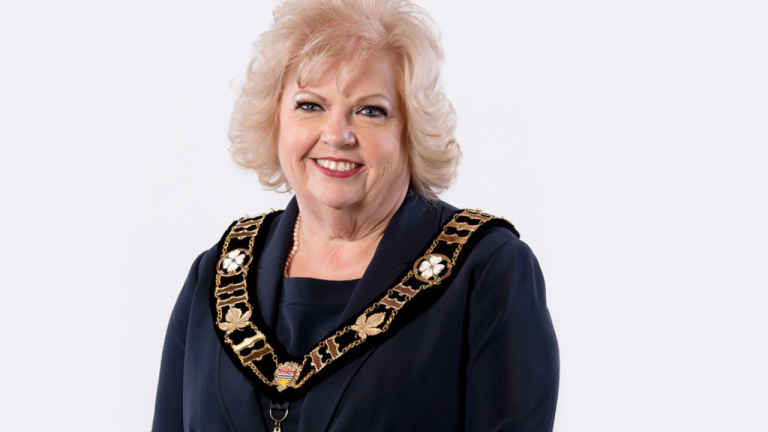
For food lovers, traveling isn’t just about seeing new places, it’s about tasting them too. Gourmet experiences take you on a flavorful journey, blending luxury travel with the rich culinary traditions of each destination. From street food to Michelin-starred restaurants, every meal tells a story. This article explores the world of gourmet dining, revealing how food connects us to culture, history, and each other. Let’s embark on this delicious adventure together!
Key Takeaways
- Culinary tourism is growing, attracting travelers seeking authentic food experiences.
- Signature dishes reflect the unique culture and heritage of a destination.
- Dining together fosters connections and understanding of local traditions.
- Michelin-starred restaurants offer exceptional food and service, representing the best in culinary art.
- Sustainable practices in dining are becoming increasingly important, blending luxury with responsibility.
The Rise of Culinary Tourism
Understanding Culinary Tourism
Culinary tourism is more than just eating while traveling; it’s about experiencing a culture through its food. It’s a growing trend where people travel specifically to taste and learn about the local cuisine. This includes everything from street food to fine dining. Think of it as a delicious way to explore the world, one bite at a time.
The Impact on Local Economies
Culinary tourism can be a real boost for local economies. When tourists come specifically for the food, they spend money at restaurants, markets, and local farms. This helps create jobs and supports sustainable culinary experiences. It’s a win-win: travelers get an authentic experience, and the local community benefits financially.
Here’s how it breaks down:
- Increased revenue for restaurants and food vendors
- Support for local farmers and producers
- Creation of jobs in the hospitality sector
- Preservation of culinary traditions
Experiencing Authentic Flavors
Forget tourist traps! Culinary tourism is all about finding those hidden gems and authentic flavors. It’s about trying that family recipe passed down for generations or visiting a local market to sample fresh, regional ingredients. It’s about connecting with the culture through its food.
It’s not just about eating; it’s about understanding the story behind the food, the people who make it, and the traditions it represents. It’s about creating memories that last long after the meal is over.
Signature Dishes of Luxury Destinations
Luxury travel isn’t just about fancy hotels and scenic views; it’s also about the food! Certain destinations become famous for their signature dishes, offering a taste of the place that’s totally unique. It’s like, you can’t say you’ve really been somewhere until you’ve tried that dish, you know?
Exploring Iconic Culinary Creations
Think about it: Tokyo and sushi, Morocco and tagine. These aren’t just meals; they’re experiences. They’re a way to connect with a place on a deeper level. It’s about understanding the history and the culture through what you’re eating. It’s not just fuel; it’s a story.
The Stories Behind Each Dish
Every dish has a story, right? It’s about the ingredients, where they come from, and how they’re prepared. Take Neapolitan pizza, for example. It’s simple, but the fresh ingredients tell you everything about Italy’s culinary heritage. It’s more than just dough and sauce; it’s a tradition. You can even find authentic gastronomic experiences that tell a story.
Regional Specialties Worth Trying
Okay, so you’re traveling. Don’t just stick to the usual tourist traps. Get out there and try the regional specialties! That’s where the real magic happens. Think about a genuine Indian curry – it’s a total exploration of regional traditions and history. It’s a spice-laden journey that goes way beyond just filling your stomach.
These iconic dishes, rooted in the cultural and historical fabric of their locales, provide an immersive experience that goes beyond the palate, inviting travelers to delve into the essence of each destination’s culinary identity.
It’s about finding those hidden gems, those dishes that the locals love, and diving in headfirst. Trust me, your taste buds will thank you.
Cultural Immersion Through Cuisine

Luxury culinary experiences? They’re your ticket to really getting a place. It’s more than just eating fancy food; it’s about connecting with the heart and soul of a destination. Think shared meals, recipes passed down through generations, and bustling local markets. It’s about tasting the stories and heritage that shape a community.
Connecting with Local Traditions
Food is a universal language. It’s how cultures communicate, celebrate, and remember. Eating local dishes isn’t just about satisfying your hunger; it’s about understanding the history and traditions of a place. Imagine learning about Mexican cuisine through a regional tasting journey. It’s a way to connect with people and their stories on a deeper level.
The Role of Shared Meals
Think about it: meals are often at the center of celebrations and gatherings. They’re a time for people to come together, share stories, and build relationships. In many cultures, the act of sharing food is a sign of hospitality and friendship.
- Family gatherings
- Community feasts
- Religious ceremonies
Shared meals create a sense of belonging and connection. They offer a glimpse into the values and priorities of a culture. It’s about more than just the food; it’s about the experience of sharing a meal with others.
Exploring Markets and Street Food
Forget sterile restaurants for a minute. The real action is in the markets and on the streets. That’s where you’ll find the most authentic and vibrant flavors. Street food vendors and market stalls are a treasure trove of culinary delights, offering a taste of local life that you won’t find anywhere else. Plus, it’s a great way to support local businesses and try new things. You can find unique gastronomic experiences in the most unexpected places.
Here’s a quick look at some popular street foods around the world:
| Country | Dish | Description |
|---|---|---|
| Thailand | Pad Thai | Stir-fried noodles with shrimp, tofu, peanuts |
| Mexico | Tacos | Corn tortillas with various fillings |
| Italy | Arancini | Fried rice balls |
Michelin-Starred Experiences
The Allure of Michelin Stars
What’s the big deal with Michelin stars? It’s more than just fancy food; it’s about the entire experience. These stars represent the highest level of culinary achievement, and they can make or break a restaurant. People travel the world just to eat at these places, and the chefs are basically rock stars in the food world. It’s a mark of quality that everyone recognizes.
Dining in Renowned Restaurants
Okay, so you want to eat at a Michelin-starred place? Be prepared. It’s not just about making a reservation months in advance (though that’s part of it). It’s about the whole shebang. The service is impeccable, the atmosphere is usually stunning, and the food? Well, it’s an art form.
- Expect to pay a pretty penny.
- Dress code is usually enforced.
- Savor every bite, because it’s an experience, not just a meal.
It’s not just about the food; it’s about the entire experience. The ambiance, the service, the presentation – everything is carefully curated to create a memorable evening.
Innovative Culinary Techniques
These chefs aren’t just following recipes; they’re inventing them. We’re talking about molecular gastronomy, crazy food pairings you’d never think of, and techniques that take years to master. It’s all about pushing the boundaries of what food can be. They’re using science and art to create dishes that are both delicious and visually stunning. It’s like eating in a food lab, but in a good way.
Sustainable and Ethical Culinary Practices
Farm-to-Table Movements
Farm-to-table isn’t just a trend; it’s a return to how things should be. It’s about knowing where your food comes from and supporting the people who grow it. Think about it: fresher ingredients, less travel time, and a boost to local farmers. It’s a win-win. You can find local produce at your nearest farmer’s market.
Zero-Waste Initiatives
Zero-waste in the kitchen? Sounds intense, right? But it’s totally doable. It’s all about reducing food waste, composting, and getting creative with leftovers.
Here are some easy ways to cut down on waste:
- Plan your meals.
- Use every part of the vegetable (carrot tops for pesto, anyone?).
- Compost what you can’t use.
It’s not about being perfect; it’s about making small changes that add up. Even reducing your waste by a little bit can make a big difference.
Supporting Local Producers
Why buy from big corporations when you can support your neighbors? Local producers often have higher quality stuff, and you’re helping your community thrive. Plus, you get to meet the people behind the food.
Here’s why it matters:
- Keeps money in the local economy.
- Supports sustainable farming practices.
- Gives you access to unique, regional products.
Technological Innovations in Gourmet Experiences

The culinary world is changing fast, thanks to technology. It’s not just about cooking anymore; it’s about how we experience food. From virtual reality dining to apps that guide our culinary adventures, tech is making its mark.
Virtual Reality Dining
Imagine eating a meal where the environment changes with each course. That’s the promise of virtual reality dining. It’s a new way to engage with food, turning a simple dinner into an immersive experience. Restaurants are experimenting with VR to transport diners to different locations, enhancing the flavors and stories behind the dishes.
Apps Enhancing Culinary Journeys
There’s an app for everything these days, including food. These apps are making it easier than ever to explore the culinary world. You can find local food tours, make reservations, and even learn about the history of a dish. Here are some things these apps can do:
- Provide restaurant recommendations based on your preferences.
- Offer behind-the-scenes access to kitchens and chefs.
- Translate menus in real-time.
These apps are like having a personal culinary guide in your pocket, making every meal an opportunity for discovery.
The Future of Food Technology
What’s next for food and tech? Think 3D-printed meals, personalized nutrition plans, and AI-powered chefs. The possibilities are endless. Technology is not just changing how we eat; it’s changing our relationship with food. It’s about making food more accessible, sustainable, and enjoyable for everyone. The future of gourmet experiences is here, and it’s delicious.
Reviving Ancient Culinary Traditions
Participating in Historical Dining Rituals
Ever wonder what it was like to eat like royalty centuries ago? Luxury culinary travel lets you do just that. Imagine participating in a traditional Japanese tea ceremony or a Roman banquet. These aren’t just meals; they’re immersive historical experiences. It’s like stepping back in time, fork in hand.
Modern Takes on Traditional Dishes
Chefs are getting creative, blending old recipes with new techniques. Think deconstructed tagines or sushi with a modern twist. It’s about respecting the past while pushing culinary boundaries. You might find a classic dish reimagined with molecular gastronomy or a forgotten ingredient making a comeback. It’s a cool way to see how food evolves.
Culinary Heritage and Its Importance
Food is more than just sustenance; it’s a cultural artifact. Preserving culinary heritage helps keep traditions alive. It connects us to our ancestors and tells stories about who we are. Plus, it’s delicious!
Protecting these traditions is important. It’s about more than just food; it’s about preserving culture and history for future generations. It’s a way to keep the past alive and relevant in the present.
Here are some reasons why culinary heritage matters:
- Preserves cultural identity
- Supports local economies
- Promotes sustainable practices
Exclusive Food and Wine Tours
Private Tastings and Experiences
Ever dreamed of sipping wine where only a select few get to tread? That’s the reality with private tastings. Imagine being personally guided through a vineyard, learning secrets passed down through generations. It’s not just about the wine; it’s about the story, the land, and the passion behind every bottle. These aren’t your average tourist traps; they’re curated experiences designed to immerse you in the world of fine wine and food. You might even get to meet the winemaker! It’s an experience that goes beyond just tasting; it’s about understanding the craft.
Hands-On Culinary Classes
Tired of just eating amazing food? Want to learn how to make it yourself? Hands-on culinary classes are where it’s at. Learn from renowned chefs, discover secret techniques, and create dishes that will impress your friends and family. It’s about more than just following a recipe; it’s about understanding the ingredients and the process.
Here’s what you might expect:
- Learning knife skills from a pro.
- Mastering the art of pasta making.
- Discovering the secrets to a perfect sauce.
Taking a cooking class is a great way to connect with the local culture and bring a piece of your travels home with you. It’s an investment in your culinary skills and a memory that will last a lifetime.
Unique Culinary Adventures
Looking for something truly unforgettable? How about truffle hunting in Italy? Or maybe a private dining experience in a centuries-old castle? These unique culinary adventures are designed to push your boundaries and create memories that will last a lifetime. It’s about stepping outside your comfort zone and embracing the unexpected. These adventures are not just about the food; they’re about the journey, the people you meet, and the stories you create. Consider small-group walking food tours to experience the best of local cuisine.
Here are some ideas:
- Foraging for wild mushrooms with a local expert.
- Learning to make cheese on a remote farm.
- Participating in a traditional harvest festival.
Wrapping Up Our Culinary Adventure
So, there you have it. The world of gourmet dining is more than just fancy plates and high prices. It’s about the stories behind the food, the cultures that shape it, and the experiences that come with each meal. Whether you’re enjoying a Michelin-starred dish or a simple street food delight, every bite connects you to a place and its people. As you plan your next trip, remember that the best journeys are often those that take you through the flavors of the world. So go ahead, explore, taste, and let your palate lead the way!
Frequently Asked Questions
What is culinary tourism?
Culinary tourism is when people travel to different places to enjoy and learn about local food and drinks. It’s all about tasting new flavors and experiencing different cultures through their cuisine.
How does culinary tourism help local economies?
Culinary tourism can boost local economies by attracting visitors who spend money on food, drinks, and experiences. This helps local restaurants, farms, and markets thrive.
What are some must-try dishes in luxury travel destinations?
Some famous dishes include sushi in Japan, pasta in Italy, and tagine in Morocco. Each dish has its own story and reflects the culture of the place.
Why is sharing meals important in different cultures?
Sharing meals is a way to connect with others and celebrate traditions. It brings people together and creates a sense of community.
What are Michelin stars and why are they significant?
Michelin stars are awards given to restaurants that offer exceptional food and service. A Michelin-starred restaurant is often seen as a top dining experience.
How are technology and food experiences connected?
Technology is changing how we experience food. For example, there are apps that help you find great restaurants, and virtual reality can enhance dining experiences.






